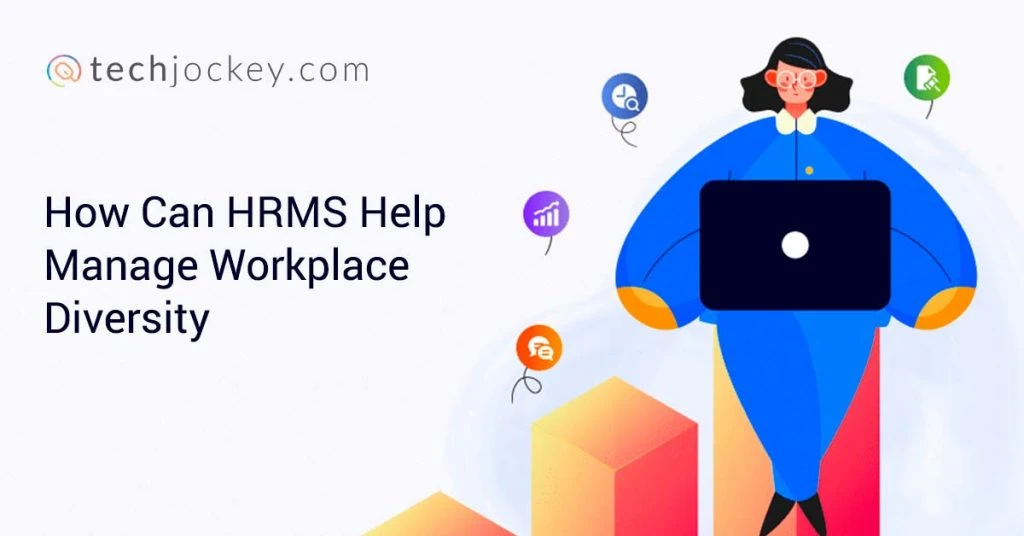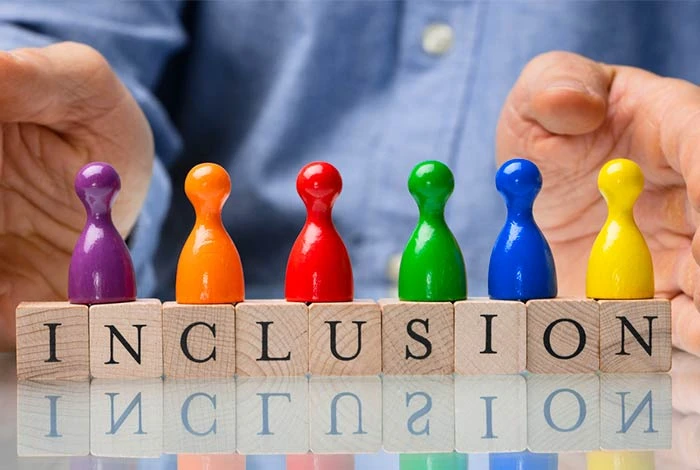Diversity and Inclusion in Workplace: How Can HRMS Software Help

According to a survey carried out by PwC, 87% of corporate leaders believed that diversity and inclusion are valuable for achieving organizational objectives. Although HR departments around the world are aiming to introduce cultural diversity in the workplace, many organizations often face challenges when it comes to actually transforming their vision into a reality.
As with most proposals, implementing diversity and inclusion in the workplace is easier said than done. It takes a thorough revamp of an organization’s existing hiring and management processes to introduce and maintain workplace diversity in a meaningful way.
This is where HRMS software can do the trick. In this article, we will discuss the ways you can use HR technology to build and maintain diversity in an organization.

What Is Workplace Diversity?
The word “workplace diversity” refers to a workplace that includes workers that have a variety of characteristics, including diverse race, gender, sexual orientation, etc. Workplace diversity can come in a variety of forms.
Diversity was initially used to refer only to racial and ethnic diversity. However, later down the line, the phrase “workplace diversity” broadened to refer to a variety of traits, including but not limited to the following:
- Ethnicity
- Race
- Age
- Education
- Socioeconomic background
- Language
- Gender
- Sexual orientation
- Religion
- Physical abilities and disabilities
- Political beliefs
- Geographical orientation
- Culture
Suggested Read: Why is Succession Planning Important in HRM
Benefits of Diversity and Inclusion in Workplace

There are numerous reasons why workplaces are focusing more on bringing diversity and inclusion in their workplace. Here are some of the most obvious benefits of diversity and inclusion in the workplace:
- Broad range of perspectives: Workplace diversity is essential for navigating complex business problems and ensuring that company decisions are properly evaluated by people with different points of view.
- Get access to a greater talent pool: In a diverse workplace, talented candidates are not rejected because of their skin color, gender, or other characteristics, despite possessing excellent abilities and subject matter expertise. By eradicating prejudice and bias among hiring teams, your organization can have access to more qualified talent pool while hiring.
- Greater diversity of voices in your organization: As the global marketplace becomes more diverse, having an internal team with individuals from different backgrounds and cultures has become necessary. It would help understand the pulse of the crowded marketplace and cater to your customers’ needs effectively.
- Faster problem solving: It has been demonstrated that increasing diversity and inclusion in an organization can improve team decision-making. According to research, cognitively diverse organizations often outperformed homogeneous ones when it comes to problem solving.
- Improved business performance: Not one, but multiple studies have found that diversity in business can help organizations improve their performance. According to a McKinsey report, businesses with diverse executive boards witnessed a 95% greater return on equity than those without diversity. Similarly, according to a 2015 study, gender diversity in the workplace helped firms financially outperform others by 15%.
Suggested Read: Why Emotional Intelligence is Importance in the Workplace?
Biggest Challenges to Workplace Diversity & How to Overcome Them

Building an inclusive workplace by introducing diversity and inclusion can be beneficial in a number of ways. However, at the same time, it might lead to certain challenges. Let’s discuss the biggest challenges you might face in terms of workplace diversity and how you can overcome those.
Challenge 1: Communication barriers- On heterogeneous teams, communication problems can occur frequently and for a variety of reasons. Your team may include members who have hearing impairments, language barriers, or certain communication preferences and style.
Solution: The best way to overcome communication challenges is to ask individuals for clarification, whenever needed.
Challenge 2: Cultural misunderstandings- When your workplace is a mix of individuals from various cultures, misunderstandings can also occur frequently. For instance, in some cultures, showing someone thumbs up or patting them on the back is considered insulting.
Solution: The best way to avoid such a problem is to foster an environment of feedback. It would help other team members recognize if they have done anything offensive. Clear communication regarding cultural differences also promotes the understanding of each other’s cultural values.
Challenge 3: Delayed decision-making- As we discussed above, bringing multiple viewpoints, opinions, and ideas to the table can significantly improve an organization’s capabilities. However, the same can sometimes halt or delay the decision-making process. One issue which is critical for some employees can be a trivial matter for others.
Solution: One way to overcome this particular challenge is to allow participants to speak their mind but only one person should be at the helm of decision-making, while others’ opinions should be welcomed.
Challenge 4: Unfair Inclusion- A working parent would ask for flexibility in terms of work hours while someone with specially abled prefers specific bathrooms and seating arrangements.
Solution: While creating policies, your advise you take into account everyone’s preferences and needs. This will help in creating a culture of inclusion where no one feel offended.
Suggested Read: How to Achieve Higher Employee Engagement During Pandemic
Tips for Managing Diversity in Workplace with Zimyo

In today’s technology-dependent world, your organization can adopt the right software to enhance its diversity and inclusion game. One such software program that can fulfill your workplace equity goals is Zimyo.
Zimyo HR software automates your HR processes so that your employees can all be on the same page, while your HR team can focus on getting the most important tasks done. Apart from the performance management features that Zimyo offers, it also comes with extensive properties that can help boost your workplace diversity and inclusion drives.
This software allows HR teams to conduct and manage trainings and educate all workers on how to be respectful to other employees with different cultural backgrounds. Training & development programs enable team members to be aware of certain guidelines that help avoid workplace conflicts, leading to a healthy and more productive work environment.
The software also enables recruiters to source candidate profiles from different parts of the world, enabling them to hire the right talent remotely. At the same time, Zimyo helps HR teams and leaders to recognize and reward their respective teams for success, inspiring them to put in their best efforts.
In short, with Zimyo in your HR toolkit, your organization can encourage its people to represent their best selves, which ultimately would benefit your business.
Suggested Read: Effective Employee Retention Strategies for Today’s Work Culture
Conclusion
As you can see, bringing diversity and inclusion in the workplace can work wonders from organizational and individual points of view. It can boost your company’s effectiveness, and bring in a whole new array of decision-making prowess.
However, at the same time, you need to adopt the right technology to overcome the challenges that come with workplace diversity.
FAQs
What is diversity in the workplace?
Diversity in the workplace refers to an organization where people from various backgrounds (gender, race, ethnicity, language, nationality, religion, etc.) come and work together without discrimination.
What's the significance of diversity in the workplace?
Diversity in the workplace can help organizations to make informed business decision without bias. It can help companies to understand the pulse of today’s diverse marketplace, therefore improving business processes.
What are the different types of diversity in the workplace?
Diversity in the workplace can come in various forms. For instance, it can be based on race, language, religion, nationality, ethnicity, gender, sexual orientation, etc.
How to manage diversity in the workplace?
The right way to manage workplace diversity is to build a set of guidelines and adopt the right technology. Here are some strategies you can implement for managing workplace diversity:
1. Plan programs that promote workplace diversity and inclusion
2. Look to hire candidates from diverse backgrounds
3. Introduce training programs to help your team cope up with diversity
4. Build a diverse leadership team
Related Categories: HR Software | Payroll Software | Attendance Software | Leave Management Software
The Techjockey content team is a passionate group of writers and editors dedicated to helping businesses make informed software buying decisions. We have a deep understanding of the Indian software market and the challenges that businesses face when choosing the right software for their needs. We are committed... Read more




























